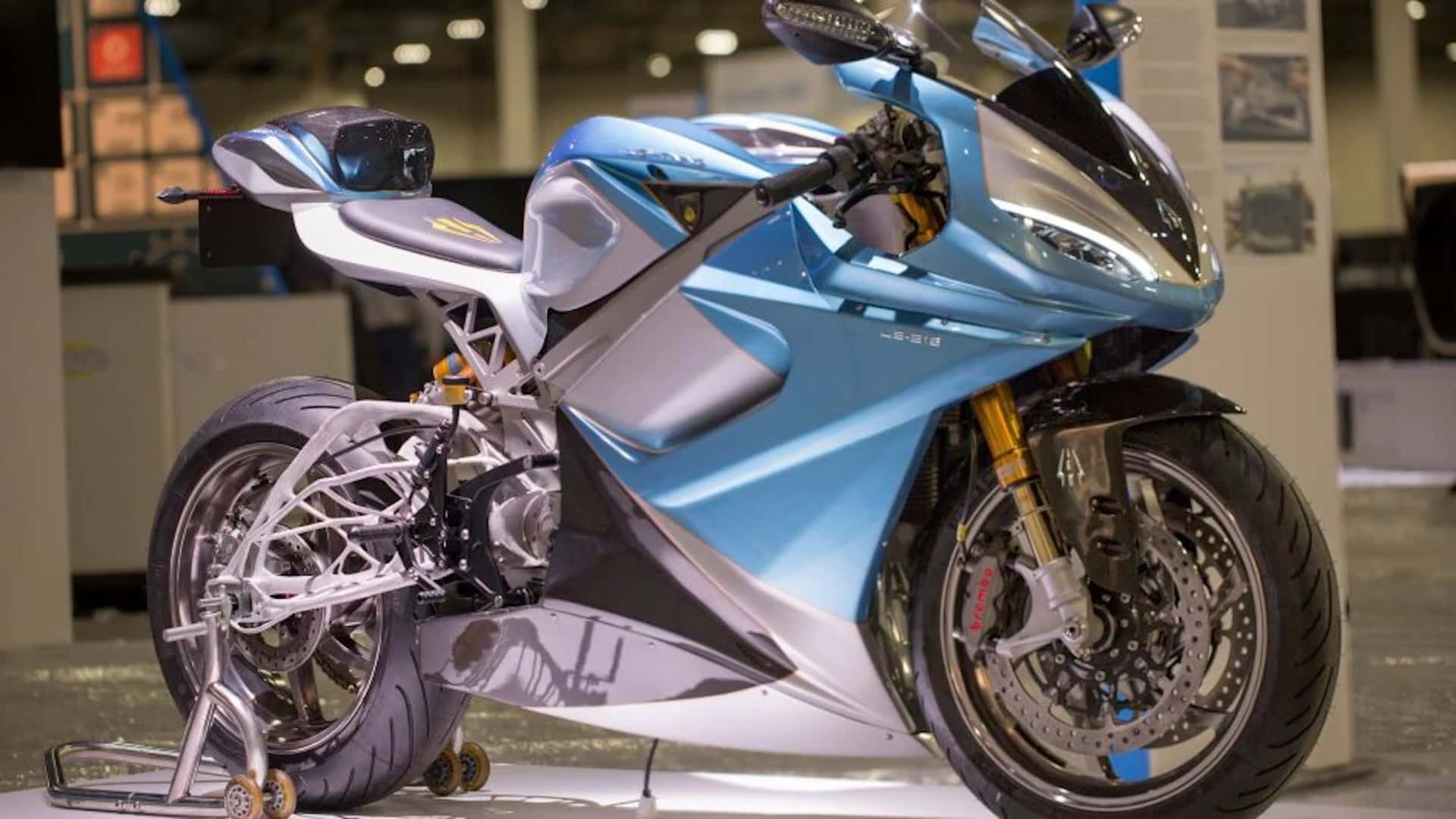Integrating artificial intelligence (AI) into various industries, including motorcycles, is exciting. Lightning Motorcycles’ partnership with Autodesk to apply generative AI to engineering design is a prime example of how AI can revolutionize product development.
Generative Programs
Generative design programs like the one used by Lightning Motorcycles and Autodesk can generate and explore numerous design possibilities based on specific parameters engineers provide. This process can yield hundreds of thousands of design studies, which the engineers can then analyse and optimise to select the most suitable design for the final product.

AI
The benefits of using AI in engineering design are substantial. AI-driven design studies can lead to improved performance, reduced weight, cost-effective solutions, and time savings. Lightning Motorcycles’ AI-driven project resulted in a lightweight swingarm for the LS-218 electric motorcycle that was stronger and lighter than the standard swingarm.
These advancements highlight how AI can push the boundaries of what can be engineered by leveraging advanced materials, manufacturing processes like 3D printing, and the immense computational power of generative AI. By utilizing AI, manufacturers can explore design options that may have been previously deemed impossible or too time-consuming to develop.

The integration of AI extends beyond the motorcycle industry. AI is used in various fields, from writing and computer engineering to art and everyday appliances. While the idea of AI becoming deeply ingrained in our daily lives might raise concerns for some, it’s essential to recognize that AI is ultimately a tool that can bring about remarkable advancements and possibilities.
Here are some other ways that AI is being used in the motorcycle industry:
- Crash avoidance systems: AI-powered crash avoidance systems can use sensors to detect potential hazards and warn the rider or even take evasive action.
- Adaptive cruise control: AI-powered adaptive cruise control can automatically adjust the motorcycle’s speed to maintain a safe distance from the vehicle in front.
- Traction control: AI-powered traction control can help to prevent the motorcycle from slipping or sliding on slippery surfaces.
- Electronic suspension: AI-powered electronic suspension can adjust damping to improve handling and comfort.
As AI continues to evolve and improve, it will likely become even more prevalent in various industries, leading to further advancements, increased efficiency, and innovative solutions.
Pros of AI integration in engineering and other industries:
- Increased efficiency and productivity: AI can automate repetitive tasks, analyze vast amounts of data, and generate design options, saving time and effort for engineers and designers. This leads to increased productivity and faster development cycles.
- Improved accuracy and precision: AI algorithms can perform complex calculations and simulations with high accuracy, reducing human error and improving the quality of designs. This can result in better-performing products and systems.
- Exploration of new design possibilities: Generative AI allows for exploring many design options, including unconventional and innovative solutions that traditional design methods may have overlooked. This opens up new possibilities and can lead to breakthrough designs.
- Cost savings: AI can help optimize designs for cost efficiency by reducing material usage, improving manufacturing processes, and identifying areas where costs can be minimized. This can result in cost savings during production and throughout the product lifecycle.
- Enhanced safety and reliability: AI algorithms can analyze and predict potential issues or failures, enabling engineers to design safer and more reliable products. This is particularly important in industries where safety is critical, such as automotive and aerospace.
Cons of AI integration in engineering and other industries:
- Initial investment and expertise requirements: Implementing AI technologies and training AI systems require significant investment and specialized expertise. This can pose challenges for smaller companies or organizations with limited resources.
- Potential job displacement: As AI automates specific tasks and processes, there is a concern that it may lead to job displacement or changes in job roles. However, it is also possible that new job opportunities will emerge as AI technology evolves.
- Ethical considerations: AI raises ethical concerns, such as data privacy, bias in algorithms, and potential misuse of AI-powered systems. Ensuring ethical AI development and deployment is crucial to avoid negative impacts on individuals and society.
- Lack of human intuition and creativity: While AI excels at processing data and generating optimized solutions, it may lack the human intuition, creativity, and contextual understanding that can be valuable in particular design and decision-making processes. Human involvement and oversight remain essential.
- Reliance on data quality and availability: AI systems heavily rely on high-quality and diverse datasets for training and decision-making. Limited or biased data can lead to inaccurate or biased outcomes. Data quality, integrity, and inclusivity are essential for reliable AI applications.
Here are some motorcycle companies using artificial intelligence (AI):
- Damon: Damon is a Canadian electric motorcycle company using AI to develop a range of safety features, including a 360-degree warning system, adaptive cruise control, and electronic suspension.
- Yamaha: Yamaha is a Japanese motorcycle manufacturer using AI to develop self-driving motorcycles. The company has been working on a self-driving motorcycle project called MOTOBOT since 2013. MOTOBOT has already completed a lap of the Suzuka Circuit, and Yamaha aims to have a fully autonomous motorcycle ready for production by 2025.
- Ducati: Ducati is using AI to improve the performance and handling of its motorcycles. The company has developed an AI-powered system called Ducati Traction Control (DTC) that helps to prevent the motorcycle from slipping or sliding on slippery surfaces.
- Harley-Davidson: Harley is using AI to improve its marketing and sales operations. The company has developed an AI-powered system called Harley-Davidson Retail Media Network (RDMN) that helps dealerships to target potential customers with relevant advertising.
These are just a few of the motorcycle companies that are using AI. As AI technology continues to develop, we can expect to see even more innovative applications of AI in the motorcycle industry in the coming years.
Lightning Motorcycles via YouTube, Lightning Motorcycles





































